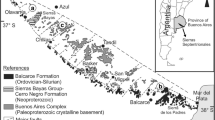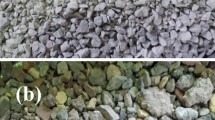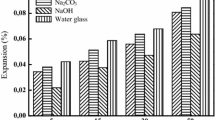Abstract
The specimens mixed with cement and various crushed minerals (149-74 μm) were cured at 80°C in saturated steam for 28–180 days as the basic study for cement-aggregate reactions. Quartz and feldspars (microcline, albite and anorthite) reacted with the cement paste, whereas hornblende, augite and olivine did not react. Anorthite was the most reactive and the reactivity of quartz, microcline and albite were almost the same as each other. Jennite was formed by cement-quartz reaction and 11 Å tobermorite, CSH (II) and hydrogarnet were formed by cement-anorthite reaction. The compressive strength of the specimens in which aggregates reacted to cement paste increased as the curing time was prolonged.
Résumé
Un mélange de ciment et de minéraux broyés a été traité à la vapeur saturée à 80 degrés pendant 28–180 jours comme pour les recherches de base pour l'étude de la réaction entre le ciment et les granulats. Quartz et feldspath (microcline, albite et anorthite) réagissent avec la pâte de ciment. Mais la hornblende, l'augite et l'olivine ne réagissent pas. De la Jennite a été formée par la réaction entre la pâte de ciment et le quartz. De la tobermorite à 11 Å (CSH II) et de l'hydrogrenat ont été formés par la réaction entre la pâte de ciment et l'anorthite. La résistance à la compression a augmenté dans le temps pour les mélanges de ciment avec le quartz et les feldspaths.
Similar content being viewed by others
References
AARDT J.H.P. & VISSER S. (1977a).Cement concrete Research, 7, p 39–44.
AARDT J.H.P. & VISSER S. (1977b):ibid., 7, p 643–648.
AARDT J.H.P. & VISSER S. (1978):ibid., 8, p 677–682.
BARNES B.D., DIAMOND S. and DOLCH W.L. (1978):ibid., 8, p 233–244.
BARNES B.D., DIAMOND S. and DOLCH W.L. (1979):Journal of The American Ceramic Society 62 [1–2], p 21–24.
COLE W.F., LANCUCKI C.J. and SANDY M.J. (1981):Cement Concrete Research, 11, p 443–454.
GARD J.A. & TAYLOR H.F.W. (1976):ibid. 6, p 667–678.
HARA N. & INOUE N. (1976): Yogyo-Kyokai-Shi, 84, p 181–185.
HARA N., INOIE N. and MATSUDA O. (1979):ibid., 87, p 86–94.
HARA N. & INOUE N. (1980):Cement Concrete Research, 10, p 677–682.
LANGTON C.A. & ROY D.M. (1980): Proceeding of 7th International. Symposium on the Chemistry of Cement (Paris), Sub-Theme VII, p 127–132.
MASO J.C. (1980): Proceeding of 7th International. Symposium on the Chemistry of Cement (Paris), Sub-Theme VII, Sub-Theme VII-1, p 3–15.
MITSUDA T., HIKIJI Y. and MURACHI M. (1970):Semento-Gifutsu-Nenpo, 24, p 76–81.
WAY S.J. and COLE W.F. (1982):Cement Concrete Research, 12, p 611–617.
Author information
Authors and Affiliations
Rights and permissions
About this article
Cite this article
Michiaki, H., Yoshikazu, H. Experimental study on the reactivity of aggregate in concrete. Bulletin of the International Association of Engineering Geology 22, 235–239 (1980). https://doi.org/10.1007/BF02600677
Published:
Issue Date:
DOI: https://doi.org/10.1007/BF02600677




